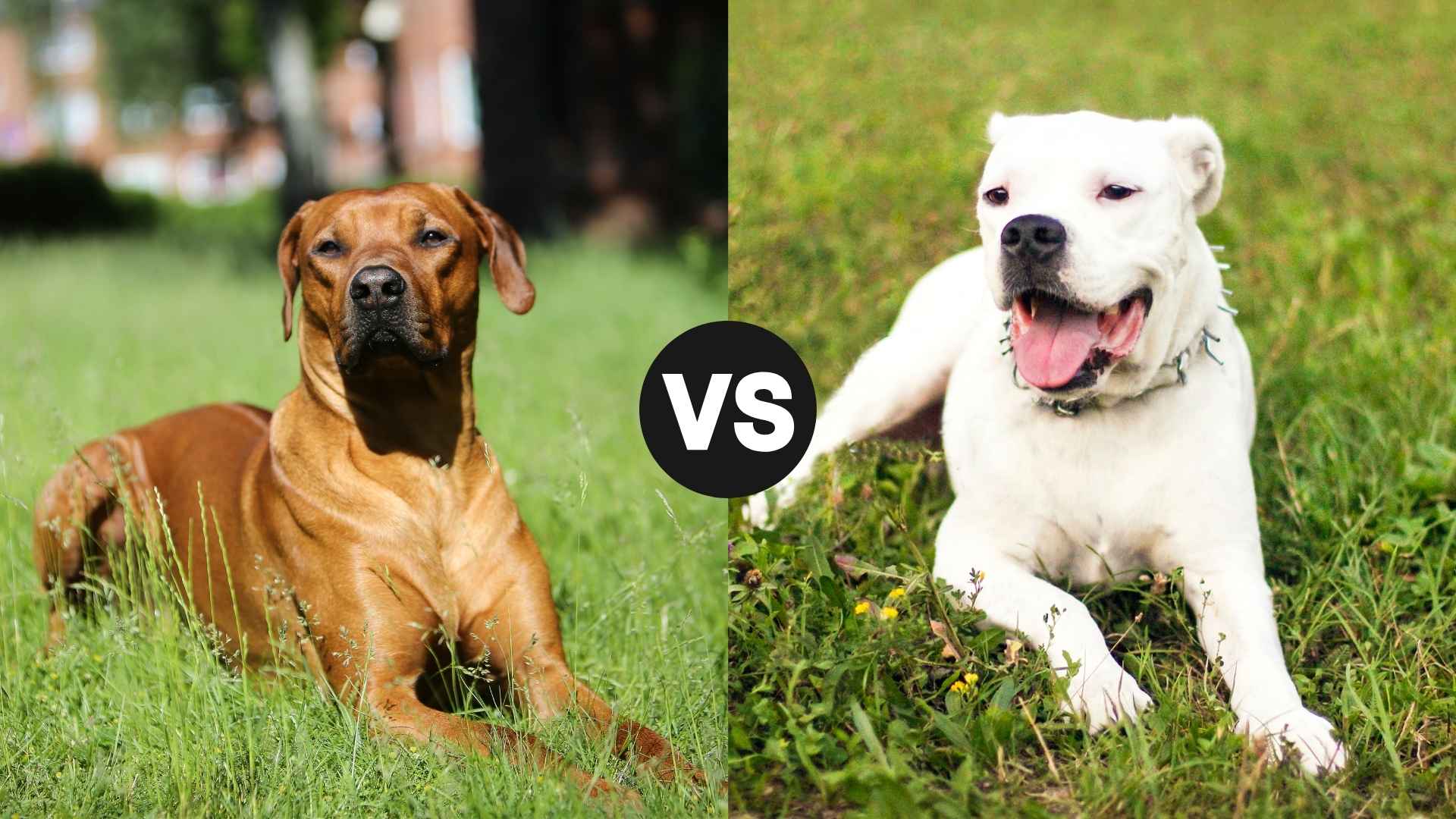When comparing two powerful and purpose-driven breeds like the Dogo Argentino vs Rhodesian Ridgeback, it’s easy to see why dog lovers often pit them side by side. Both breeds were originally developed for big-game hunting—traits that still influence their personalities, energy levels, and needs today.
The Dogo Argentino, a member of the Sporting Group, is a muscular, athletic dog known for its strength, intelligence, and fearless pursuit of wild boar and puma. With its striking all-white coat and confident demeanor, the Dogo is truly a pack-oriented powerhouse.
On the other hand, the Rhodesian Ridgeback—belonging to the Hound Group—is admired for its unique ridge of backward-growing hair and its historic role in tracking lions in Africa. Also called the “Renaissance hound,” the Ridgeback is versatile, dignified, and equally athletic.
In this guide, we’ll dive into the differences and similarities between these two bold breeds to help you determine which one suits your lifestyle best.
Breed Origins: Dogo Argentino vs. Rhodesian Ridgeback
The Rhodesian Ridgeback traces its lineage to southern Africa, where semi-wild native hunting dogs were crossbred with other dog breeds brought by European settlers in the 1600s. These included mastiffs, Great Danes, bloodhounds, bulldogs, greyhounds, and terriers. Known for the distinctive ridge of hair along its back, the breed earned fame in the 1800s when hunters in Rhodesia (modern-day Zimbabwe) relied on it for big-game tracking, especially lions.
Revered for its courage, stamina, and loyalty, the Ridgeback was equally valued as a guard dog and family companion. The breed’s official standard was written in 1922, with American Kennel Club recognition following in 1955.
The Dogo Argentino was developed much later, in 1928, by Argentine physician Antonio Nores Martinez. His goal was to create the ultimate big-game hunting dog, starting with the fierce Old Córdoba Fighting Dog and blending in breeds like the boxer, Great Dane, bull terrier, Spanish mastiff, and pointer.
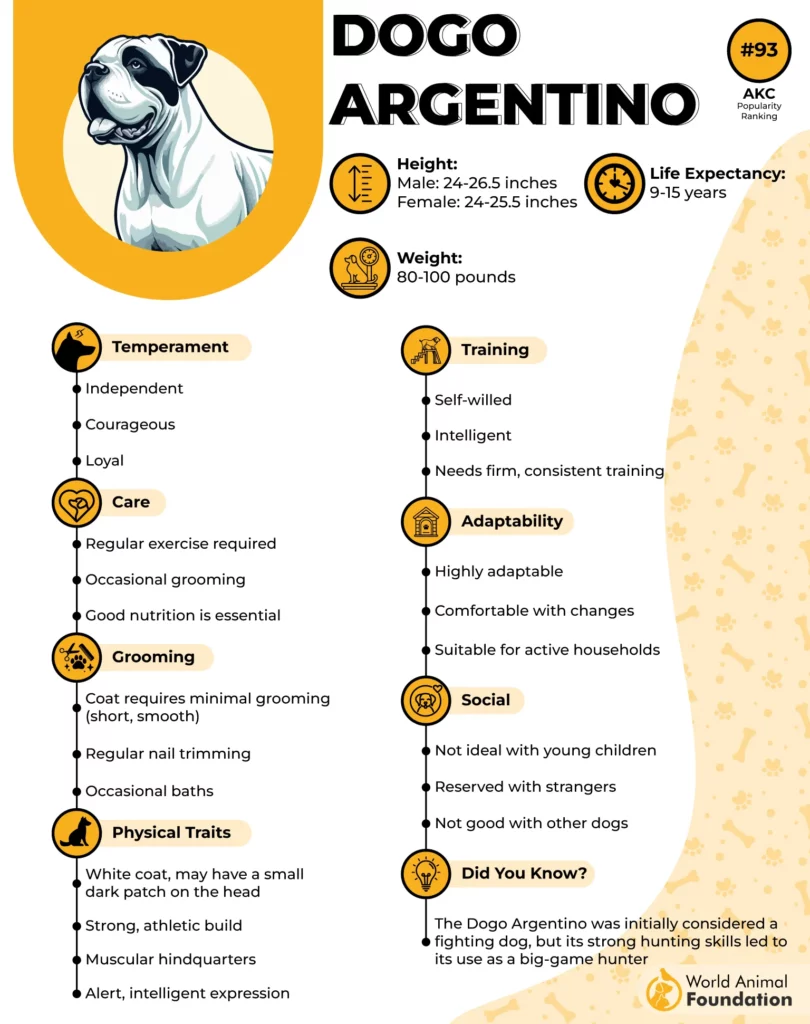
Originally bred and used for dog fighting, the breed soon proved itself as a fearless and effective hunter of wild boar and puma in the rugged Argentine wilderness. Despite its power and versatility, the Dogo Argentino remains a rare breed, only recently recognized by the American Kennel Club in 2020. Its strong, protective nature has led to legal restrictions in some countries.
Physical Appearance and Distinctive Features
The Rhodesian Ridgeback dog is a muscular and athletic hound dog breed known for its speed, power, and endurance. One of its most recognizable traits is the narrow ridge of hair running along its spine, growing in the opposite direction from the rest of the coat. Their coloring resembles the hues of a wheat field, ranging from pale flaxen to deep red, with either a black or the rarer brown nose.
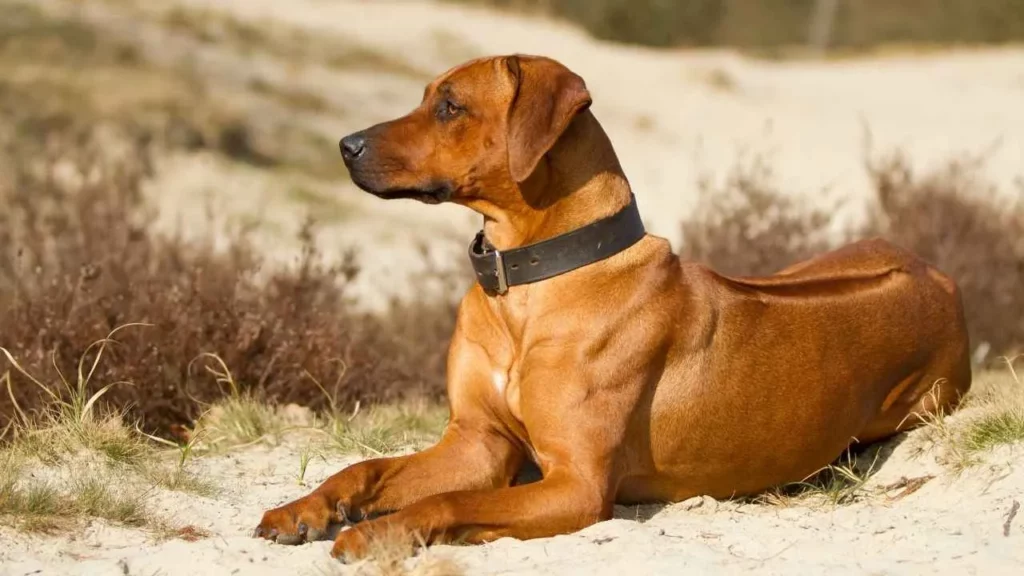
Males typically stand 25–27 inches tall and weigh up to 85 pounds, while females are slightly smaller at 24–26 inches and around 70 pounds. With a dignified and serious presence, the Ridgeback has a sleek, short coat and a strong, symmetrical build that reflects its hunting heritage.
As noted by WebMD, the Dogo Argentino is a strikingly powerful and well-built dog, defined by its short, smooth white coat and broad, muscular frame. A distinctive feature is the pirata—a dark patch near the eye, though this should not cover more than 10% of the head. This breed has a large, rounded, broad head, a strong neck, and a well-defined chest.
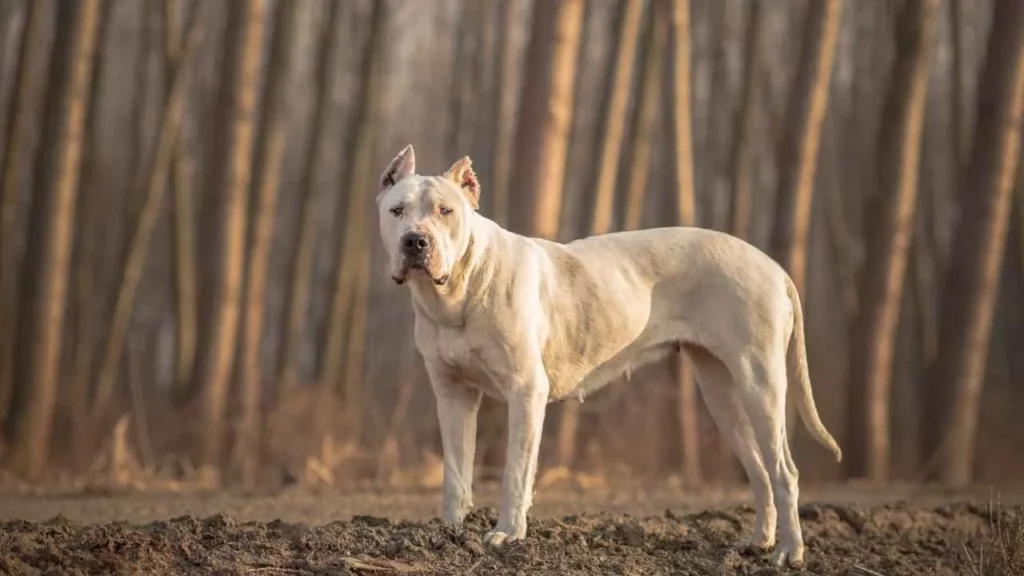
The muzzle is equal in length to the skull and slightly concave, with powerful jaws forming a scissor bite. The eyes range from dark brown to hazel, and the high-set ears are often cropped for a more upright look. Males and females share a similar size, with an average height of 24–26.5 inches and weighing between 80 to 100 pounds. The Dogo’s athletic frame and protective posture give it a commanding yet loyal presence.
Temperament and Behavioral Traits
The Rhodesian Ridgeback is a bold, independent, and intelligent breed deeply rooted in its hunting ancestry. Known for its courage and loyalty, it forms strong bonds with its family and generally coexists peacefully with other household pets. While Ridgebacks are not overly playful or hyperactive, they do enjoy moderate activity and are naturally protective.
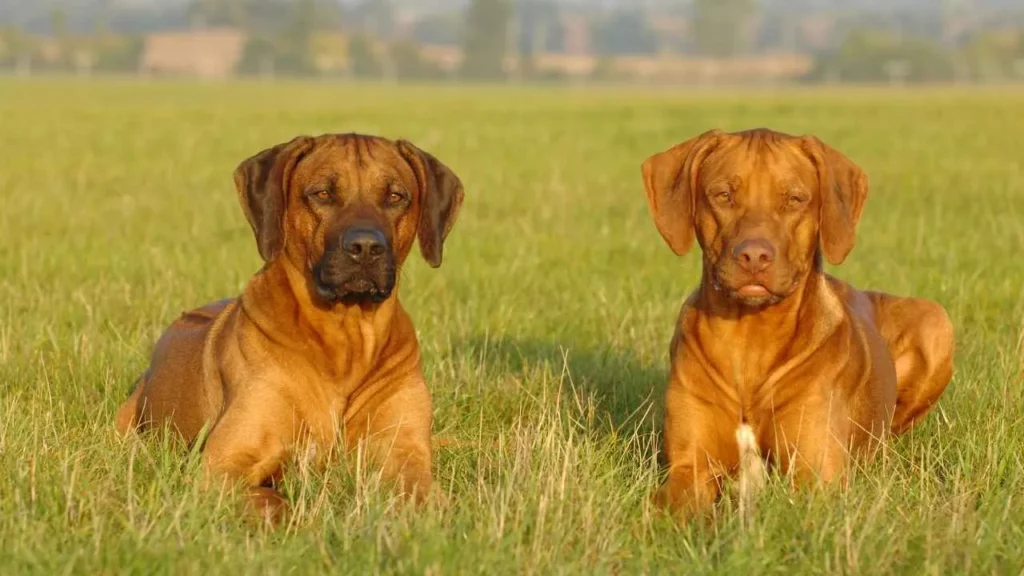
They tend to be reserved with strangers and may show aggression toward unfamiliar dogs, making early socialization important. Though occasionally stubborn and independent thinkers during training, Ridgebacks are highly capable of obedience when guided with patience and consistency. Their strength and assertiveness make them better suited for adults and older children, as they may unintentionally overpower smaller or more vulnerable family members.
In contrast, the Dogo Argentino is a powerful and assertive breed that requires a confident, experienced owner. Known for its protective instincts and strong prey drive, the Dogo can be aggressive toward unfamiliar people, cats, and dogs, including those it knows casually. This breed is best introduced to obedience training early in life to establish control and respect, states Britannica.
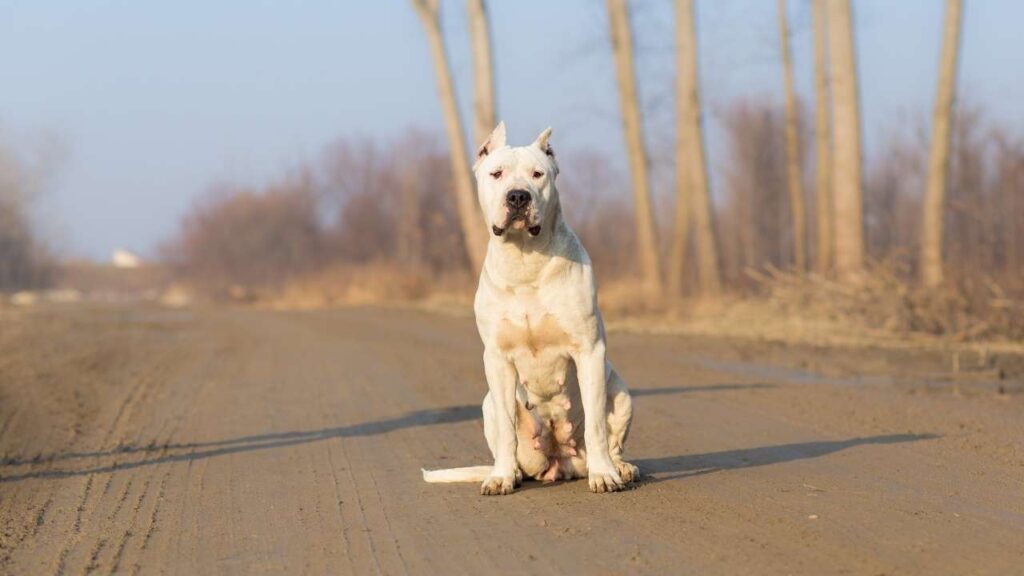
While it may not be ideal for households with kids or seniors due to its size and strength, the Dogo Argentino is a loyal companion that thrives on close contact with its family. It is relatively quiet but highly active, and it needs regular mental and physical stimulation to prevent boredom or behavioral issues.
Health Conditions and Grooming Demands
The Rhodesian Ridgeback is generally a robust and healthy breed, but is prone to certain hereditary conditions. Common health concerns include hip and elbow dysplasia, which can lead to mobility issues and joint pain. They are also susceptible to hypothyroidism, which can cause symptoms such as weight gain, lethargy, and cold intolerance.

Eye conditions like cataracts, entropion, and persistent pupillary membranes (PPM) may also develop. Additionally, dermoid sinus—a congenital skin defect—is relatively common in this breed and is considered a disqualifying trait for breeding. Grooming needs for Ridgebacks are minimal; their short, wheaten coats require weekly brushing and occasional baths. Regular checks of ears, nails, and teeth are essential, and a nail grinder may be preferred over clippers for maintenance.
The Dogo Argentino is typically a healthy, athletic breed, but can face a few specific health risks. Deafness is more prevalent in this breed due to its predominantly white coat, and like many large dogs, it may develop hip dysplasia. Its short, smooth coat sheds moderately and is low in odor, making it easy to maintain with weekly brushing using a soft-bristle or rubber brush.
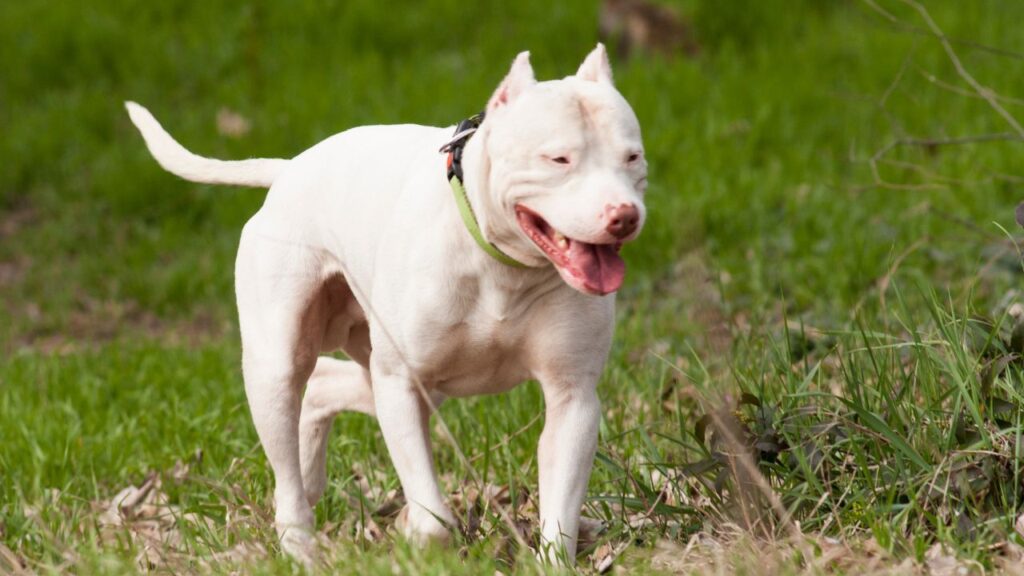
Occasional baths are sufficient unless the dog becomes particularly dirty. Routine ear, nail, and dental care is essential for overall health. Because of its white coat and short fur, the Dogo is also vulnerable to sunburn and should be protected from prolonged sun exposure, especially during peak hours.
Exercise and Activity Requirements
Rhodesian Ridgebacks are powerful, athletic dogs that thrive with regular physical and mental stimulation. While they can adapt to various living environments, they require consistent daily exercise to stay fit and content.
Long walks, backyard play sessions, and canine sports like tracking or agility are excellent outlets for their energy. They also enjoy running and benefit greatly from interactive activities with their owners. Without sufficient exercise, this intelligent and energetic breed may become bored or develop behavioral issues.
To meet their activity needs, Rhodesian Ridgebacks can enjoy a mix of outdoor and indoor play. Fenced yards are ideal for safe off-leash play, while walks, hikes, or games of fetch provide engaging movement.
Indoor options like hide-and-seek, teaching tricks, or rolling a ball can keep them mentally sharp. Involving your Ridgeback in structured dog sports such as obedience or rally also supports a healthy lifestyle and strengthens the bond between dog and owner.
Legal Considerations and Ownership Restrictions
The Dogo Argentino, though legal in the United States, faces significant ownership restrictions in various regions around the world. Its muscular build and resemblance to pit bull-type breeds have led to it being banned in countries like the United Kingdom, Denmark, Fiji, and Ukraine, according to PetMD.
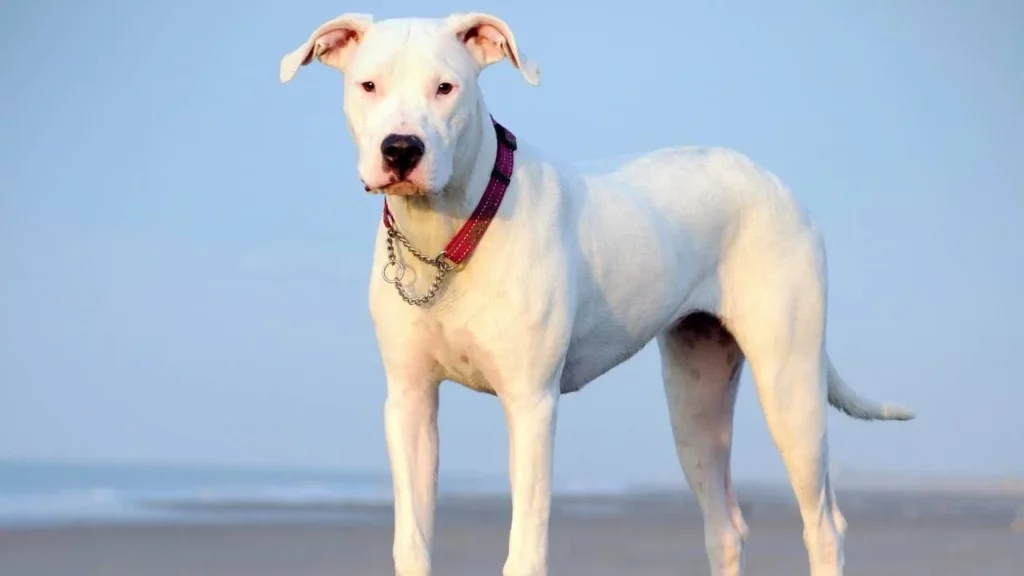
Even in places where it is permitted, homeowners may face hurdles such as insurance refusals or local breed-specific legislation. This breed’s historical association with dog fighting further complicates public perception and legal status, making it critical for prospective owners to thoroughly research local laws and regulations before acquiring one.
In contrast, the Rhodesian Ridgeback is generally accepted worldwide and is not banned in any country. However, in some European areas, it may appear on restricted breed lists due to size, strength, or regional dog laws.
These restrictions could require special licensing, behavioral assessments, or mandatory muzzling in public. While far less controversial than the Dogo Argentino, Ridgeback ownership may still come with extra responsibilities depending on local legislation.
Dogo Argentino vs. Rhodesian Ridgeback: Final Verdict
The Dogo Argentino and Rhodesian Ridgeback are both powerful, athletic breeds with deep hunting roots and strong protective instincts. Still, they differ in key areas that can make one a better fit than the other, depending on your lifestyle.
The Dogo Argentino is bold, muscular, and loyal, excelling as a working or guard dog. However, it requires an experienced, confident owner due to its high prey drive and potential for aggression toward unfamiliar dogs or people. It’s ideal for active individuals or families committed to firm training and structure but may face legal restrictions in some regions.
On the other hand, the Rhodesian Ridgeback is a more adaptable hound with a dignified presence and a slightly easier temperament. It thrives on exercise and human companionship, making it a great match for families seeking a loyal, athletic companion with less intense handling needs.
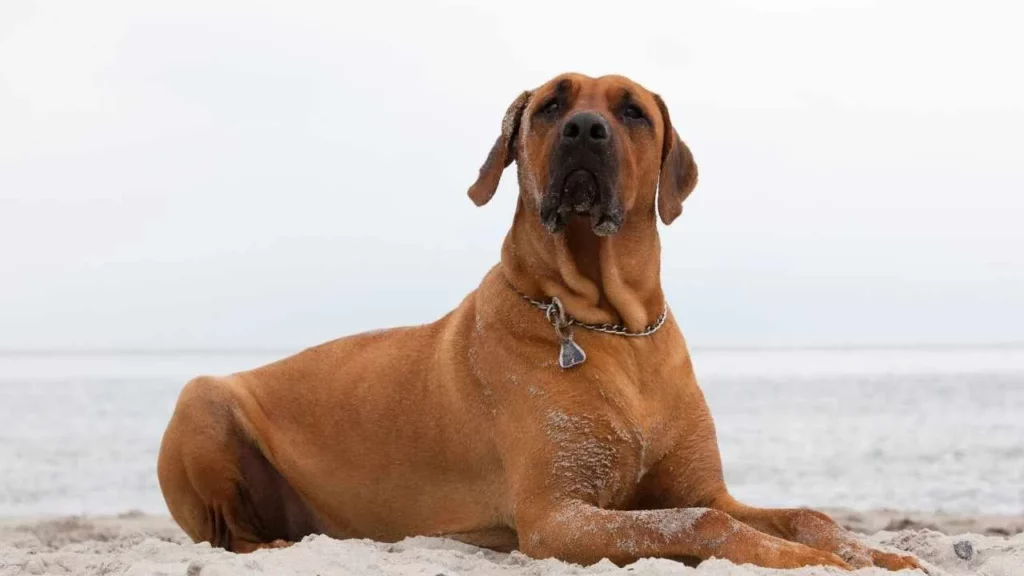
While both breeds need socialization, training, and regular activity, the Ridgeback’s generally more manageable nature and broader legal acceptance make it the more accessible choice for most households.
Conclusion
Choosing the right dog between the Rhodesian Ridgeback and Dogo Argentino depends on your experience level, lifestyle, and expectations. Both are generally good with families, but they demand structure, intense exercise, and early training—especially as puppies.
The Ridgeback, with its roots in hunting lions and coyotes, tends to be more independent yet adaptable, while the Dogo’s guarding instinct and strength make it better suited for seasoned handlers.
If you’re considering adding a powerful, loyal companion to your household with other pets or are comparing these two breeds to other breeds, factor in their temperament, legal status, and need for space to stretch those long legs.
Whether you’re searching for the best dog breed for protection, fun outdoor adventures, or even to rescue, test your readiness first. These aren’t casual lap dogs—they need purpose, food for fuel, and firm leadership to keep their paws grounded and their barking in check.


